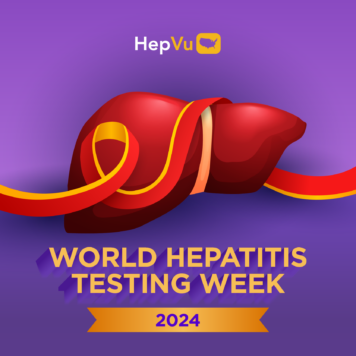Selected and summarized by Ronald O. Valdiserri, MD, MPH, Professor, Department of Epidemiology, Rollins School of Public Health, Emory University, and Co-Chair of HepVu.
Dr. Valdiserri reviews significant articles on prevention, public health, and policy advances in viral hepatitis. This month, he highlights, “Hepatitis A Person-to-Person Outbreaks: Epidemiology, Morbidity Burden, and Factors Associated with Hospitalization—Multiple States, 2016—2019,” authored by Hofmeister M, Xing J, Foster A, et al. Published in Journal of Infectious Diseases, February 2021, 223(3):426-434.
What question(s) does this study address?
Following the 2006 ACIP (Advisory Committee on Immunization Practices) recommendation that all children be vaccinated to prevent Hepatitis A infection, the overall incidence of Hepatitis A in the United States declined substantially. However, since 2016, the U.S. has experienced an unprecedented increase in Hepatitis A outbreaks. In May 2021, states reported more than 39,000 Hepatitis A cases, over 24,000 hospitalizations, and 374 deaths. Using a 10% random sample of outbreak-associated cases from Kentucky, Michigan, and West Virginia (between July 1, 2016 and June 10, 2019), these researchers sought to describe the epidemiology of the outbreaks and to identify the risk factors associated with worse health outcomes, including hospitalization.
What are the major findings of this report/article?
- 817 persons were included in the analysis: 472 from Kentucky, 92 from Michigan, and 253 from West Virginia. 62.5% of the participants were male with an average age of 39 years.
- For individuals with available risk information, 73.2% reported drug use, 14% were experiencing homelessness or unstably housed, and 29.7% were currently or recently incarcerated at the time of Hepatitis A diagnosis.
- Of the 149 men with available sexual history information, 10.1% reported sexual contact with another man.
- 423 (51.8%) of participants were hospitalized as a result of their Hepatitis A infection.
- Of the 719 (88%) of study participants with complete information, 7 (1%) died as a result of their Hepatitis A infection.
- Being a resident of Michigan, being a Gay and Bisexual Man, participating in non-injection drug use, and experiencing homelessness were significantly associated with Hepatitis A-related hospitalization.
- The average length of hospital stay among study participants was 5 days, which was “slightly longer” than the average length of hospital stays in the U.S. in 2016. About 10% of those hospitalized for Hepatitis A required admission to an intensive care unit.
What are the implications for the prevention and control of viral hepatitis?
- The rates of hospitalization in this study (nearly 52%) are greater than rates of hospitalization observed in previous person-to-person outbreaks for Hepatitis A.
- Additional research is needed to understand the higher proportion of persons hospitalized for Hepatitis A in Michigan, compared to Kentucky and West Virginia. Differences in patient characteristics, provider decision-making, and hospital admission policies may have played a role in these differences.
- In addition to the cost of human suffering, it’s been estimated that the average cost per Hepatitis A hospitalization in 2017 was $16,232.00 — a substantial financial burden that could be prevented with improved vaccination coverage for at-risk adults.
- Two-thirds of study participants were missing data on previous Hepatitis A vaccination status. However, among those for whom this information was available, nearly 90% had not been previously vaccinated against Hepatitis A.
- The findings of this study support current ACIP recommendations to provide Hepatitis A vaccination to all persons at increased risk for Hepatitis A infection, including persons who use illegal drugs, Gay and Bisexual Men, and persons experiencing homelessness.



